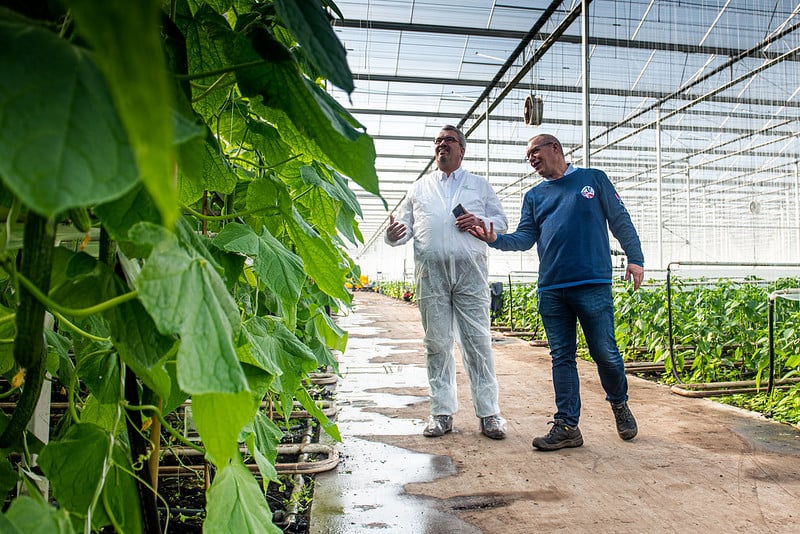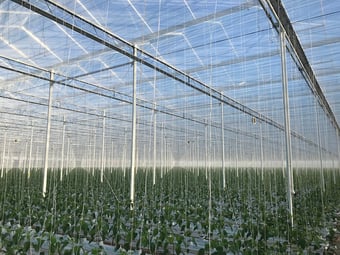Step 1: Consider external climate and crop needs
When planning to improve the consistency of the climate within your greenhouse, it is important to consider the weather at different times of the year, as well as the needs of the crop. Using light intensity as example, if the location your greenhouse is in has a high light intensity for the majority of the year, it may be necessary to implement solutions that protect the crop from sun damage.
Step 2: Assess the issues within your greenhouse
Next it is important to take a look at issues that already exist within your greenhouse to help identify areas for improving the climate. Climate screens are often a great tool solution to many of common issues. Climate screens can play a role in saving energy, improving light distribution, blocking light out entirely or providing shading to prevent crop burning. By first identifying the issues within your greenhouse, it is easier to find the right solution to improve growing conditions and save energy.
Step 3: Identify production goals
The next step towards achieving optimal growing conditions is to clearly define your production goals. In order to determine solutions to achieve an optimal result, it is important to keep these goals in mind. The external climate, crop needs and shortfalls within your greenhouse that were previously identified are a great way to determine goals to reach an optimal climate controlled greenhouse.
Step 4: Consider using climate screens
Finally, consider using climate screens to achieve an optimal climate within your greenhouse. Climate screens can provide versatile solutions to optimize crop yield and quality while keeping energy costs down. By identifying the factors that are contributing to a sub-optimal climate, and implementing appropriate climate screens as a solution, you can achieve consistently optimized growing conditions which can lead to additional advantages like saving energy.




